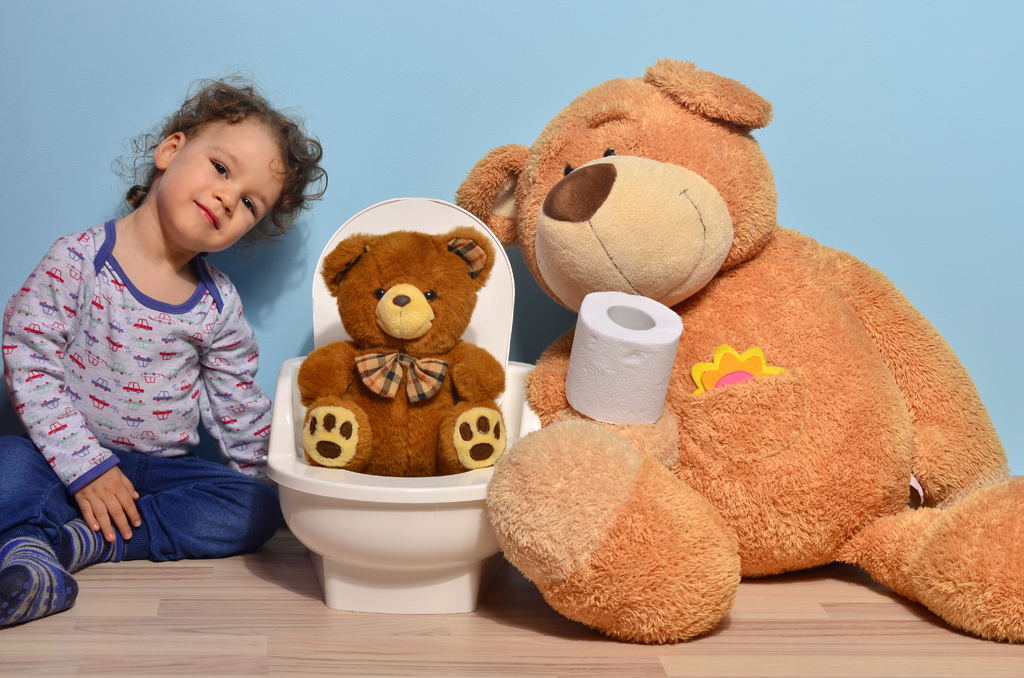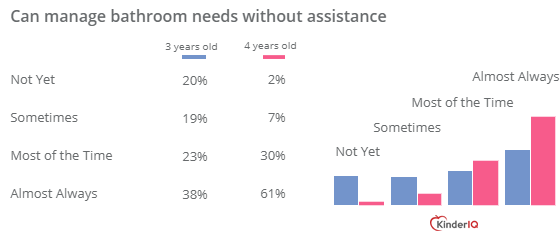Step-by-Step Potty Training
tl;dr
- Potty training can begin at 18 months for some, but may be between ages 2 and 3 for others
- Between ages 3 and 4, most kids 'get it' most of the time
- Start with the right equipment (potty training seat, pull-up diapers)
- Schedule potty breaks and reward success to stay motivated
One of the most important developmental milestones for young children is learning how to use a toilet. As a parent, it is up to you to guide your child through the process of learning how to use the toilet. This blog post is a resource that parents can refer to when teaching their child how to manage their bathroom needs without assistance.
Signs That a Child Is Ready for Potty Training
Your child will not be able to learn how to use the toilet unless they've developed bladder and bowel control. By 18 months, most children have developed this control. However, a child who is physically able to learn how to use the toilet is not necessarily emotionally ready for potty training. Every child is different. Accordingly, different children are ready for potty training at different ages. Some children can successfully learn to use the toilet at 18 months while others will not be ready until they are 2 or 3 years old.

You don't have to worry about your child lagging developmentally even if they're not ready for potty training at 3 years old. It is important for parents to be patient. Don't force your child to learn to use the toilet if they're not ready physically and/or emotionally.
If you're not sure whether your child is ready to use the toilet, you should look for some of the following signs:
- Your child can pull their pants up and down on their own.
- Your child remains dry for 2 or more hours at a time. This indicates that your child is beginning to develop bladder and bowel control. The less often you need to change your child's diaper, the more ready your child probably is for potty training.
- Your child is able to follow straightforward instructions.
- Your child copies the toileting behavior of a parent.
- Your child expresses the desire to learn how to use the toilet. For example, your child may express discomfort or even disgust when their diaper is soiled. Your child may also say that they want to wear underpants instead of diapers.
- Your child understands when they are having a bowel movement or urinating. A child will not be able to learn how to use the toilet on their own unless they are able to recognize that they are urinating or having a bowel movement. Look for changes in behavior or facial expressions.
- Your child is able to walk and get up and down from a potty or potty seat with assistance.

Check out data from thousands of parents on when their child was comfortable managing bathroom needs at KinderIQ.com/data.
How Long Does Potty Training Take?
As you can imagine, the amount of time it takes to potty train differs from child to child. Most parents spend 3 to 6 months potty training before their child can manage their bathroom needs without assistance. However, some children require more time potty training while others require less time. If you start the potty training process before your child is ready, the process will probably be lengthier. Also, while your child may learn how to use the toilet on their own very quickly, it often takes months or years for a child to learn how to stay dry at night. Overall, potty training is a lengthy process that requires a lot of patience and effort.
How to Start Potty Training
First, it is important that you select the right potty for your child to start the potty training process. The potty that you buy should be durable and sturdy. The last thing you want is for the potty to break before your child can manage their bathroom needs without assistance or for the potty to tip over and spill its contents. You can go to the store with your child and allow them to choose the potty that they want.
Your child may want to use the "grown-up" potty instead. If this is the case, you should buy a potty seat for your toilet. A potty seat can be attached to a traditional toilet. Be sure the potty seat you choose is a snug fit for your toilet. The potty seat should have a foot rest. Your child can use the foot rest for support during bowel movements.
Next, you should show your child how to use the potty. In general, the best way to teach a child is to demonstrate. Therefore, you should bring your child to the bathroom and show them to use the toilet by squating, wiping, and flushing. As you explain to your child how to use the toilet, you should explain the process to them verbally. Be sure to remain consistent when it comes to the terms that you use for bathroom talk. For example, you can always use the words "pee" or "poop" or you can use the more formal terms "urinate" and "defecate". No matter which terms that you use, be sure to use the same terms throughout the potty training process.
If your child is male, it is generally easier to teach them to urinate sitting down. Once your male child has gotten the hang of urinating while sitting down on the toilet, they can move on to learning how to urinate standing up.
While your child may want to start wearing underwear immediately, you should have them start with disposable pull-ups. Your child can pull them up and down like underwear. However, disposable pull-ups will serve as a safe guard in the event that your child has an accident. Pull-ups are more similar to diapers than underwear. Once your child appears to have gotten the hang of using a toilet, you can have them switch to training pants. Ideally, the training pants should be washable and made out of cotton. Training pants are more similar to underwear than diapers. Finally, after your child has mastered using the toilet, you can have them start wearing underwear.
You should try to schedule potty breaks for your child. Every once in a while, you should have your child sit on the potty or potty seat for a few minutes. It is especially important to schedule potty breaks automatically after naps and in the morning. Be sure to stay with your child throughout the duration of the potty breaks. However, it is important that you don't force your child to sit on the potty or potty seat. If your child wants to get up and leave the toilet, you should allow them to do so.
Finally, you want to do your best to try and keep your child motivated. Provide your child with verbal encouragement throughout the potty training process. For example, each time your child uses the toilet successfully, you can tell them "Good job" and give them a hug. You can also give your child tangible rewards. For example, you can give your child a sticker each time they successfully use the potty. Giving your child a tangible reward is most effective during the beginning of the potty training process. When your child has an accident or makes a mistake, be sure not to yell or scold them to avoid discouraging them.
Typically, potty training is a difficult but rewarding process for young children. If you're not sure whether you should start potty training your child, you should look for the tell-tale signs discussed in this blog post. As long as you follow the tips above, your child should eventually be able to manage their bathroom needs without assistance.